Java适配器模式
爱学习的大鱼 人气:0基本介绍
- 适配器模式(Adapter Pattern)将某个类的接口转换成客户端期望的另一个接口表示,主的目的是兼容性,让原本因接口不匹配不能一起工作的两个类可以协同工作。其别名为包装器(Wrapper)
- 适配器模式属于结构型模式
- 主要分为三类:类适配器模式、对象适配器模式、接口适配器模式
工作原理
- 适配器模式:将一个类的接口转换成另一种接口.让原本接口不兼容的类可以兼容。
- 从用户 的角度看不到被适配者,是解耦的。
- 用户 调用适配器转化出来的目标接口方法,适配器再调用被适配者的相关接口方法。
- 用户收到反馈结果, 感觉只是和目标接口交互。
类适配器模式
背景介绍:在中国电源大都是220伏的,而日常生活中手机的充电确是5伏1安(苹果),通过类适配器模拟电源适配器实现手机充电功能
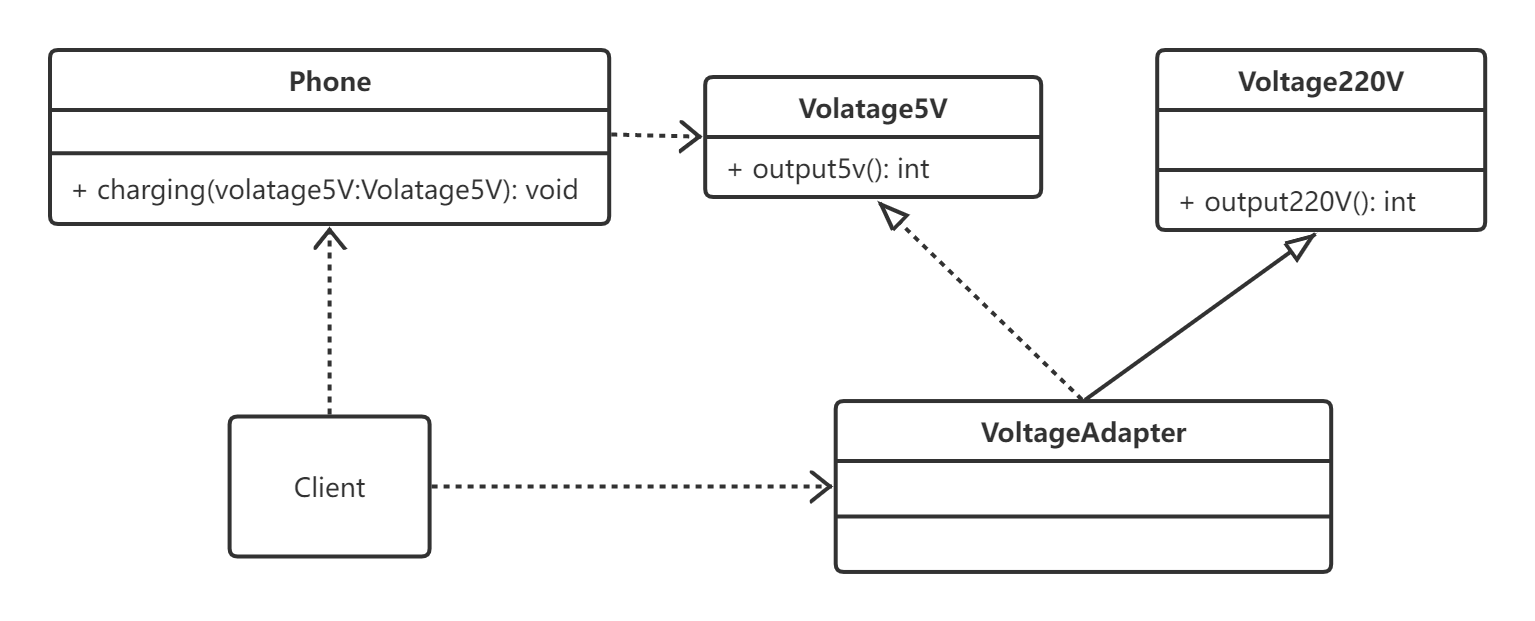
Voltage220V(被适配电源)
public class Voltage220V {
public int output220V() {
int src = 220;
System.out.println("电压 = " + src + "伏");
return src;
}
}Voltage5V(目标输出)
public interface Voltage5V {
int output5V();
}VoltageAdapter(电源适配器)
public class VoltageAdapter extends Voltage220V implements Voltage5V {
@Override
public int output5V() {
int src = output220V();
int dst = src / 44;
System.out.printf("适配器将%d伏====>%d伏\n", src, dst);
return dst;
}
}Phone(手机充电)
public class Phone {
public void charging(Voltage5V v) {
int src = v.output5V();
if (src <= 5 && src > 0) {
System.out.println("电压 = " + src + "伏,可以充电...");
} else if (src > 5) {
System.out.println("电压过高");
} else {
System.out.println("没有充电...");
}
}
}Client
public class Client {
public static void main(String[] args) {
System.out.println("====类适配器模式====");
Phone phone = new Phone();
phone.charging(new VoltageAdapter());
}
}实现结果:
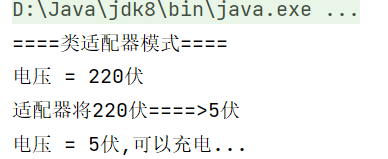
类适配器模式注意事项和细节
- Java是单继承机制,所以类适配器需要继承src类这一点算是- -一个缺点,因为这要求dst必须是接口,有一定局限性;
- src类的方法在Adapter中都会暴露出来,也增加了使用的成本。
对象适配器模式
优点:
- 基本思路和类的适配器模式相同,只是将Adapter类作修改,不是继承src类,而是持有src类的实例,以解决兼容性的问题。即: 持有sre类,实现dst类接口,完成src->dst的适配
- 根据“合成复用原则”,在系统中尽量使用关联关系(聚合)来替代继承关系。
- 对象适配器模式是适配器模式常用的一种
UML类图:
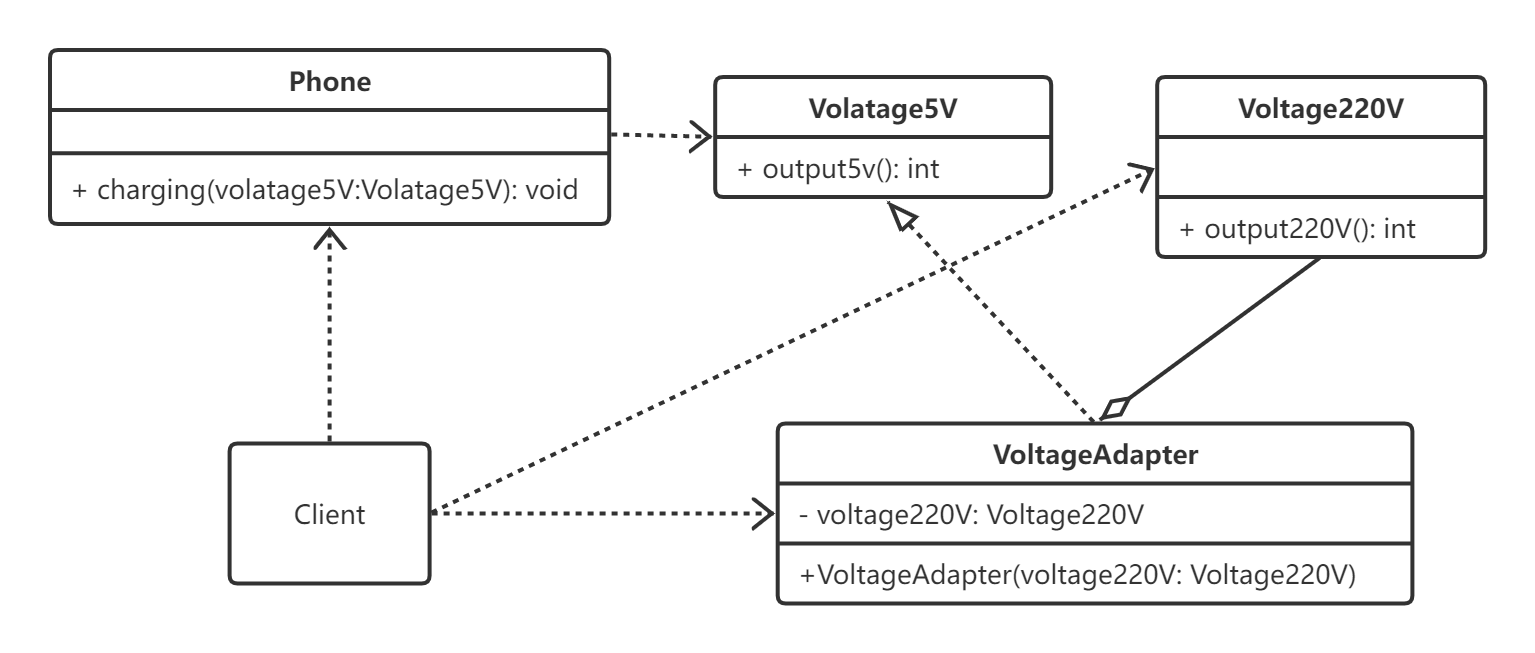
其他代码与上一致,修改电源适配器即可:
public class VoltageAdapter implements Voltage5V {
private Voltage220V voltage220V = null;
public VoltageAdapter(Voltage220V voltage220V) {
this.voltage220V = voltage220V;
}
@Override
public int output5V() {
int src = 0;
if (voltage220V != null) {
src = voltage220V.output220V();
}
int dst = src / 44;
System.out.printf("适配器将%d伏====>%d伏\n",src,dst);
return dst;
}
}Client(测试)
public class Client {
public static void main(String[] args) {
System.out.println("====对象适配器模式====");
Phone phone = new Phone();
phone.charging(new VoltageAdapter(new Voltage220V()));
System.out.println("--------------------");
phone.charging(new VoltageAdapter(null));
}
}实现结果:
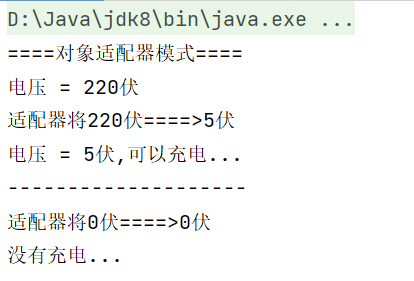
接口适配器模式
简介:
- 一些书籍称为:适配器模式(Default Adapter Pattermn)或缺省适配器模式。
- 核心思路:当不需要全部实现接口提供的方法时,可先设计一个抽象类实现接口,并为该接口中每个方法提供一个默认实现(空方法),那么该抽象类的子类可有选择地覆盖父类的某些方法来实现需求。
- 适用于一个接口不想使用其所有的方法的情况。
UML类图
背景介绍:模拟springMVC源码展示接口设计模式
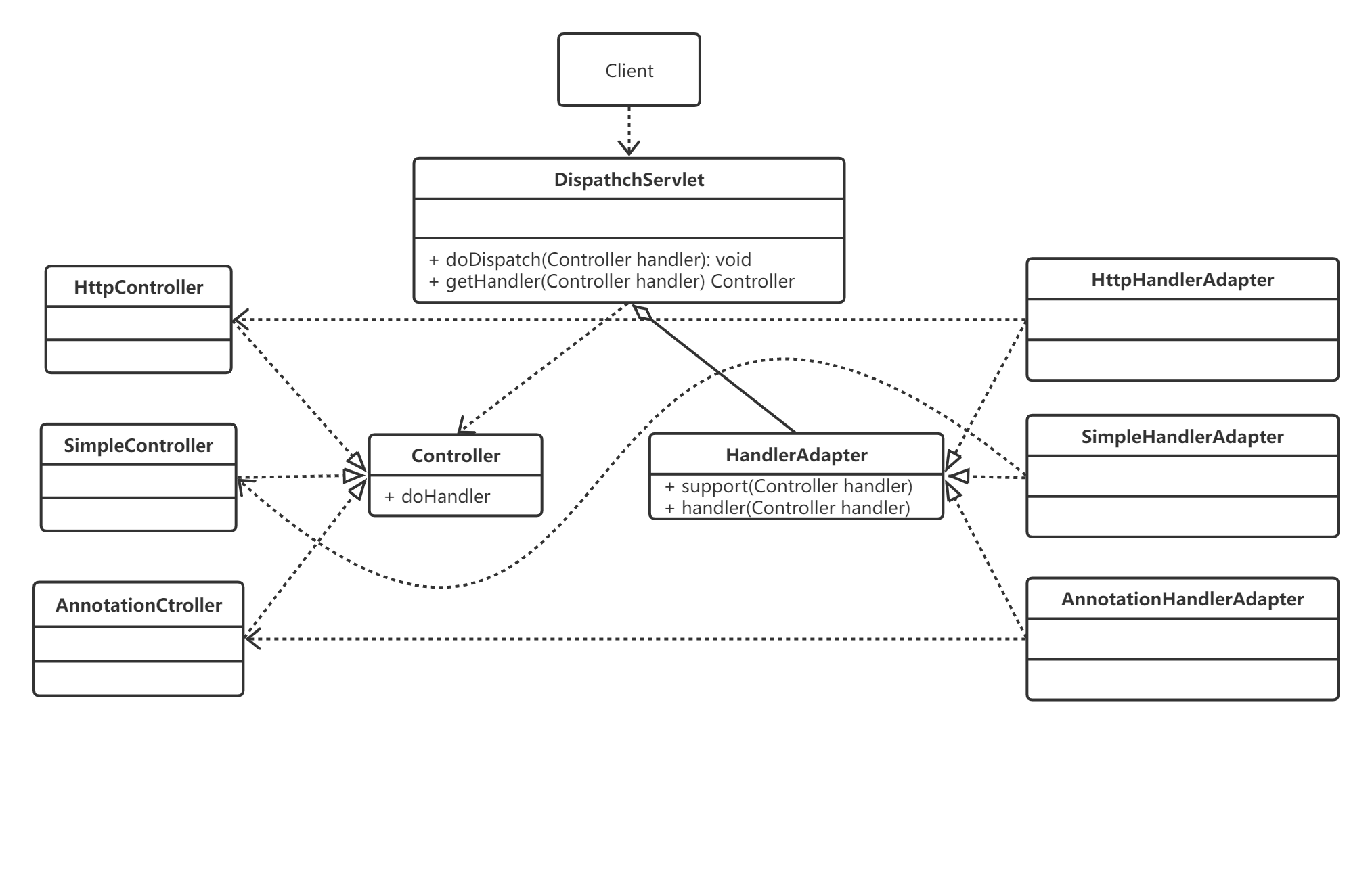
接口适配器和实现类
///定义一个Adapter接口
public interface HandlerAdapter {
public boolean support(Controller handler);
public void handle(Controller handler);
}
// 多种适配器类
class SimpleHandlerAdapter implements HandlerAdapter {
public void handle(Controller handler) {
handler.doHandler();
}
public boolean support(Controller handler) {
return (handler instanceof SimpleController);
}
}
class HttpHandlerAdapter implements HandlerAdapter {
public void handle(Controller handler) {
handler.doHandler();
}
public boolean support(Controller handler) {
return (handler instanceof HttpController);
}
}
class AnnotationHandlerAdapter implements HandlerAdapter {
public void handle(Controller handler) {
handler.doHandler();
}
public boolean support(Controller handler) {
return (handler instanceof AnnotationController);
}
}模拟Controller
//多种Controller实现
public interface Controller {
void doHandler();
}
class HttpController implements Controller {
@Override
public void doHandler() {
System.out.println("http...");
}
}
class SimpleController implements Controller {
@Override
public void doHandler() {
System.out.println("simple...");
}
}
class AnnotationController implements Controller {
@Override
public void doHandler() {
System.out.println("annotation...");
}
}模拟DispatchServlet
public class DispatchServlet {
public static List<HandlerAdapter> handlerAdapters = new ArrayList<HandlerAdapter>();
public DispatchServlet() {
handlerAdapters.add(new AnnotationHandlerAdapter());
handlerAdapters.add(new HttpHandlerAdapter());
handlerAdapters.add(new SimpleHandlerAdapter());
}
public void doDispatch(Controller controller) {
// 得到对应适配器
HandlerAdapter adapter = getHandler(controller);
// 通过适配器执行对应的controller对应方法
if (adapter != null) {
adapter.handle(controller);
} else {
System.out.println("没有该适配器...");
}
}
public HandlerAdapter getHandler(Controller controller) {
//遍历:根据得到的controller(handler), 返回对应适配器
for (HandlerAdapter adapter : this.handlerAdapters) {
if (adapter.support(controller)) {
return adapter;
}
}
return null;
}
public static void main(String[] args) {
new DispatchServlet().doDispatch(new SimpleController() );
new DispatchServlet().doDispatch(new HttpController() );
new DispatchServlet().doDispatch(new AnnotationController());
}
}
实现结果:

适配器模式的注意事项和细节
- 三种命名方式,是根据sre 是以怎样的形式给到Adapter (在Adapter里的形式)来命名的。
- 类适配器:以类给到,在Adapter里,就是将src当做类,继承
- 对象适配器:以对象给到,在Adapter里,将sre作为一个对象,持有
- 接口适配器:以接口给到,在Adapter里,将src作为一个接口,实现Adapter模式最大的作用还是将原本不兼容的接口融合在一起工作。
加载全部内容